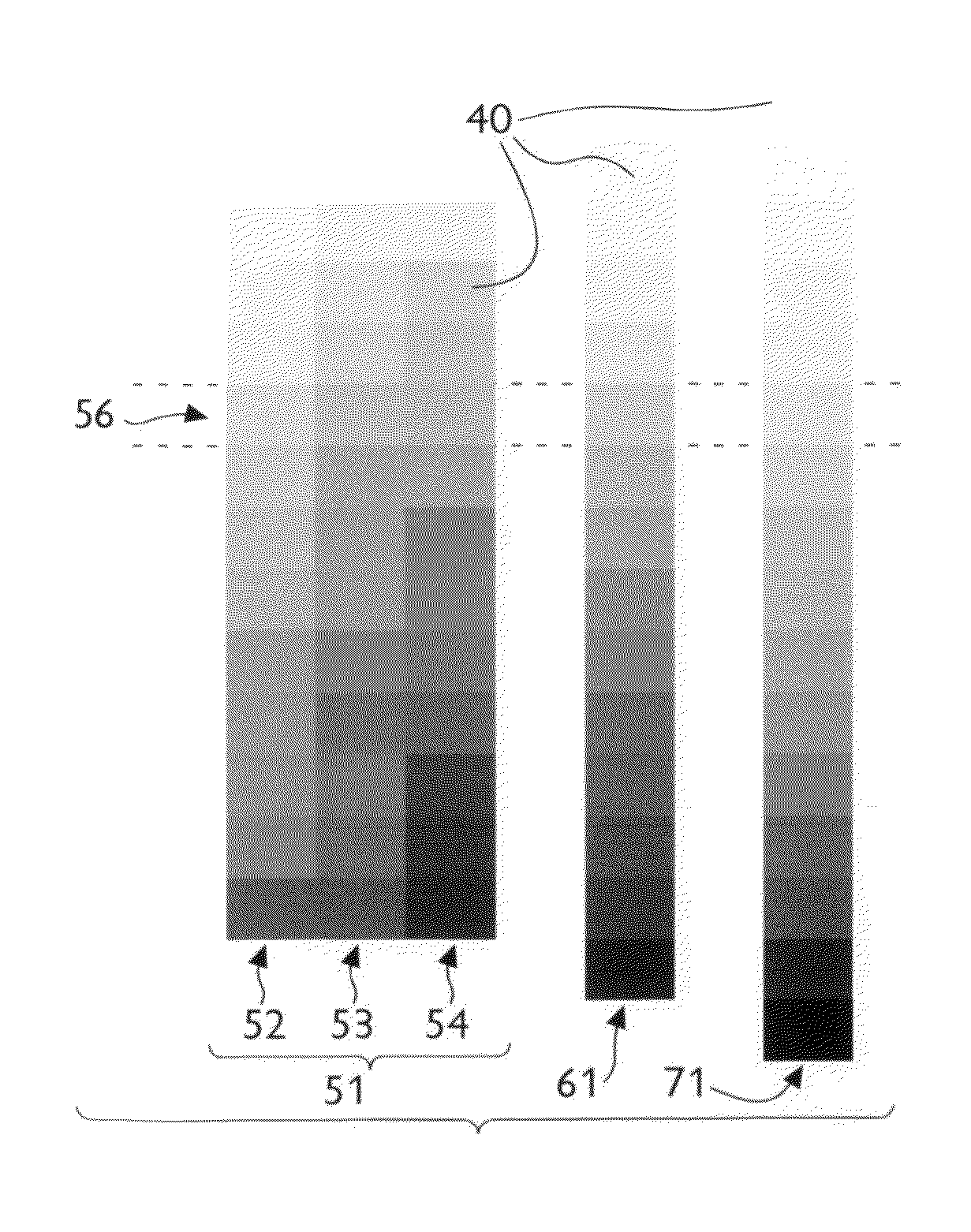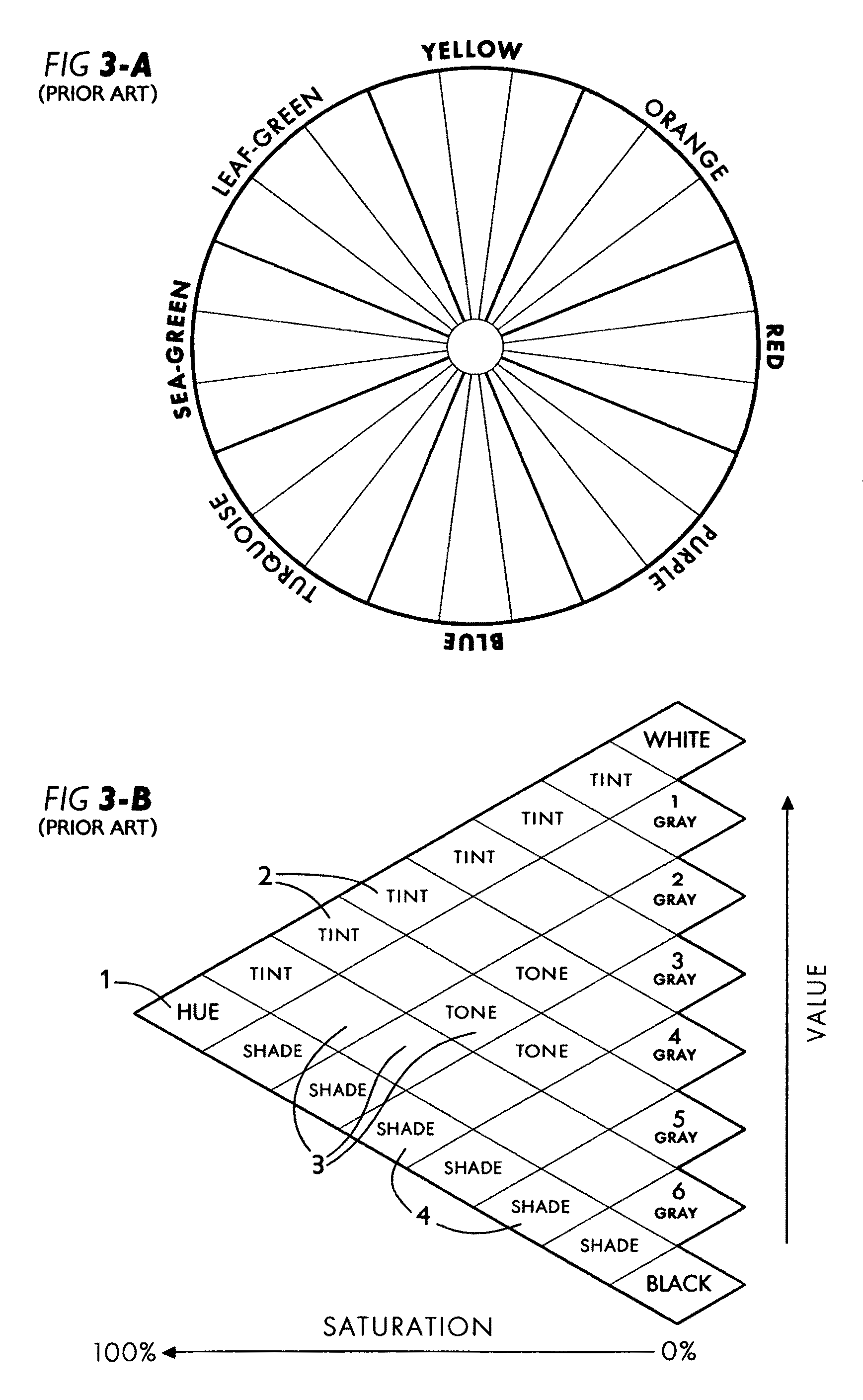Artists' color display system
a color display and artist technology, applied in the field of color display systems, can solve the problems of inability to meet both color memory is short-lived, and color-appearance systems that do not adequately meet traditional and technological needs, etc., to achieve the effect of facilitating mixing and matching
- Summary
- Abstract
- Description
- Claims
- Application Information
AI Technical Summary
Benefits of technology
Problems solved by technology
Method used
Image
Examples
embodiment
Preferred Embodiment
[0175]A principle of the invention is that a moderately-sized assortment of well-chosen, strongly-saturated colors is of more practical use to artists, particularly painters, than are larger assortments containing many barely-distinguishable color variations. To this end, the system's color families, and their respective color elements, are defined to provide variety, strength, and effective organization.
[0176]These objectives in organizing artists' coloring media are accomplished as follows:
Hue Variety—FIGS. 10-A, 10-B, 12-C, and 13-C
[0177]In my previous U.S. Pat. No. 5,860,518 (1999), supra, I suggest that minor hue variations can be included within each pastel color family to provide the artist with a livelier, expanded assortment of colors.
[0178]The present system improves upon this idea, not only for pastels and other artists' pigments, but for color-appearance applications in general, by segmenting the visible spectrum into a series of discrete hue ranges o...
PUM
 Login to View More
Login to View More Abstract
Description
Claims
Application Information
 Login to View More
Login to View More - R&D
- Intellectual Property
- Life Sciences
- Materials
- Tech Scout
- Unparalleled Data Quality
- Higher Quality Content
- 60% Fewer Hallucinations
Browse by: Latest US Patents, China's latest patents, Technical Efficacy Thesaurus, Application Domain, Technology Topic, Popular Technical Reports.
© 2025 PatSnap. All rights reserved.Legal|Privacy policy|Modern Slavery Act Transparency Statement|Sitemap|About US| Contact US: help@patsnap.com



